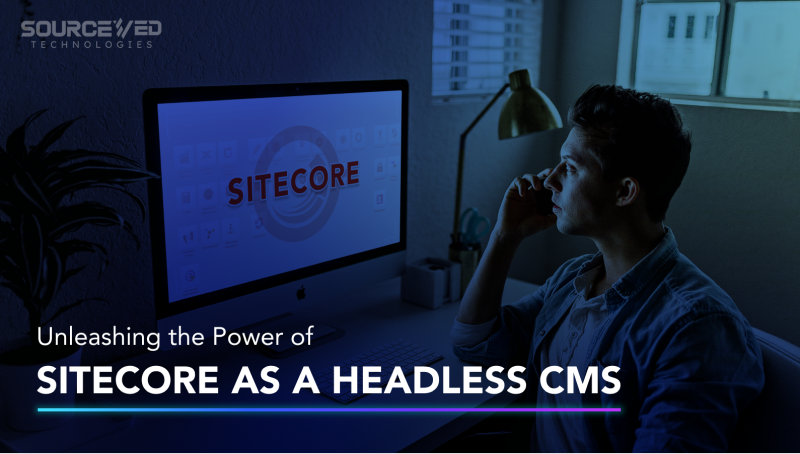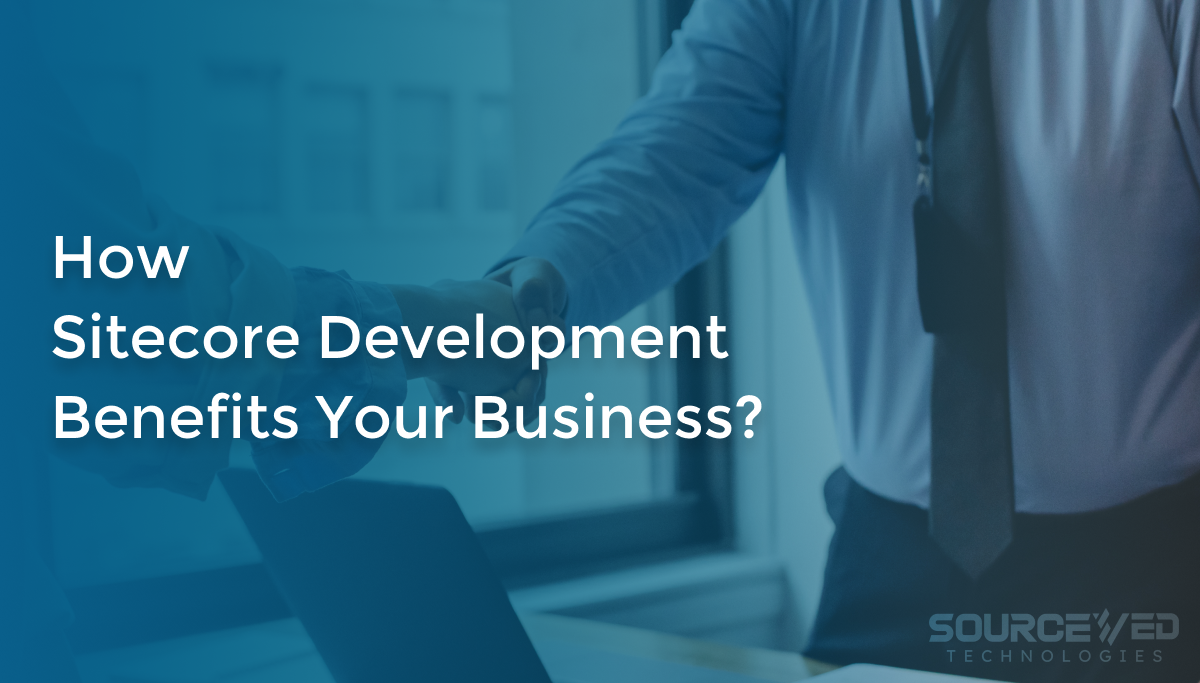
Sitecore is well-known for its proficiency in content management and serves as an enticing headless CMS solution. In the contemporary digital landscape, where content must reach a multitude of platforms and devices, Sitecore’s headless architecture delivers the flexibility and adaptability that organizations require.
Fundamentally, Sitecore’s headless CMS liberates content creators and marketers to excel at their craft—developing engaging and meaningful content—free from the constraints of conventional CMS systems. Content is efficiently managed through an intuitive interface, encompassing not just text but also rich media, such as images, videos, and various digital assets.
Sitecore’s headless capabilities are founded on an API-first approach. It provides a set of APIs, including RESTful and GraphQL, which developers can leverage to retrieve content and seamlessly deliver it to various digital channels. This API-first design ensures that content can be accessed by a wide range of applications and devices, enabling organizations to maintain a consistent brand experience across all touchpoints.
Exploring Headless CMS and Sitecore’s Strategy
Headless Content Management System (CMS) represents a modern approach to content management that differentiates content creation and storage from its final presentation Unlike traditional CMS platforms, a headless CMS avoids showing the specific form of the website or application To be able to organize and distribute content across digital platforms such as websites, mobile apps, IoT devices, and other interfaces, all while using customized front-end technology implemented, this flexibility enables organizations to easily, uniformly, and highly customize changes across multiple platforms and devices And gives you the freedom to manipulate the user experience, making it ideal for companies navigating the challenging terrain of today’s digital supply chain
How Sitecore’s Headless Architecture Differs
Sitecore’s headless architecture stands apart from traditional content management systems by decoupling content creation and delivery, providing unparalleled flexibility in content deployment. Unlike conventional CMS platforms, Sitecore’s headless approach liberates content from being bound to specific presentation layers, allowing it to be effortlessly distributed to a diverse range of digital channels and devices. This distinctive architecture empowers organizations to adapt to the ever-evolving digital landscape, delivering a consistent and engaging user experience across various platforms while leveraging their preferred front-end technologies.
The Advantages of Sitecore as a Headless CMS
1) Enhanced Flexibility and Innovation:
Sitecore’s headless strategy empowers enterprises to drive innovation by enabling developers to leverage cutting-edge front-end technologies. This adaptability leads to dynamic, interactive digital experiences that cater to contemporary user expectations.
2) Content Reusability:
With a detached architecture, content becomes easily reusable across diverse channels. A singular piece of content can be disseminated through multiple platforms, ensuring uniformity and minimizing redundant efforts.
3) Scalable Personalization:
Sitecore’s acclaimed personalization capabilities extend seamlessly to its headless mode. This signifies the ability to provide tailored content to users across various touchpoints, fostering engagement and enriching the user journey.
4) Accelerated Time-to-Market:
Decoupling backend and frontend development processes expedite time-to-market. Content creators can operate independently from developers, enabling both teams to work concurrently and launch projects more swiftly.
5)SEO Optimization:
Sitecore’s headless approach permits meticulous control over metadata, structured data, and other SEO optimization components. This SEO optimization enhances visibility on search engines, leading to improved rankings and discoverability.
Implementing Sitecore’s Headless Strategy
1) APIs for Content Delivery:
Sitecore Content Delivery API facilitates the retrieval of content in various formats, including JSON, XML, and HTML. This API-first approach ensures that content is accessible to any front-end technology.
2) GraphQL Integration:
Sitecore supports GraphQL, a query language for APIs, offering more flexibility in data retrieval. GraphQL empowers developers to request specific data, minimizing over-fetching and optimizing performance.
3) Frontend Technologies:
Sitecore’s headless capabilities open the door to integrating popular frontend frameworks like React, Angular, and Vue.js. That allows developers to craft interactive, responsive, and seamless user experiences.
The Power of Sitecore’s Personalization Engine
A) Introduction to Sitecore’s Personalization Features
Sitecore’s personalization capabilities are at the forefront of modern digital experiences. This powerful CMS offers a set of tools that enable businesses to tailor content and interactions to individual users or specific audience segments. By analyzing user behavior, preferences, and historical data, Sitecore’s personalization features empower organizations to serve relevant content and recommendations in real time, creating highly engaging and conversion-driven digital experiences. These features help businesses boost user engagement, drive conversions, and build long-lasting customer relationships, making Sitecore a leader in delivering personalized and impactful online interactions.
B) Tailoring Content for Different User Segments
Tailoring content for different user segments is a strategic approach used by businesses to personalize and optimize their messaging and offerings to cater to the unique needs and preferences of various audience groups. This involves:
1. Audience Analysis:
Understanding your audience’s demographics, behaviors, and preferences through data analysis, surveys, and user feedback.
2. Segmentation:
Grouping users with similar characteristics or behaviors into segments, such as age, location, interests, or purchase history.
3. Content Personalization:
Creating customized content, recommendations, and experiences for each user segment. This may include personalized product suggestions, targeted marketing messages, or dynamic website content.
4. A/B Testing:
Experiment with different content variations to determine which resonates best with each segment and optimize accordingly.
5. Behavior Tracking:
Using analytics tools to monitor user interactions and adjust content in real-time based on user behavior.
6. Email Marketing:
Sending tailored email campaigns to specific segments, ensuring that the content is relevant and engaging to each group.
7. Content Management Systems (CMS):
Leveraging CMS features to easily manage and deliver personalized content to different segments.
8. Marketing Automation:
Implementing marketing automation tools to schedule and trigger personalized content delivery based on user actions and preferences.
9. User Experience (UX) Design:
Creating user interfaces that adapt to individual user segments, providing a tailored and seamless experience.
10. Data Privacy:
Ensuring compliance with data privacy regulations and obtaining user consent when collecting and using personal data for segmentation and personalization efforts.
By tailoring content for different user segments, businesses can enhance user engagement, increase conversion rates, and build stronger customer relationships by delivering relevant and valuable content to each audience group.
C) Leveraging User Behavior, Preferences, and Historical Interactions
Sitecore’s Personalization Engine is adept at harnessing user data, tracking behavior, assessing preferences, and analyzing historical interactions. By monitoring how users engage with content and products, it creates a comprehensive profile of individual interests. This real-time data empowers Sitecore to dynamically customize content, segment users, and conduct A/B testing, all while continually learning and refining its personalization capabilities for an enhanced user experience.
Real-World Examples: Sitecore’s Headless Triumphs
Numerous organizations have harnessed Sitecore’s headless capabilities to transform their digital landscape:
E-Commerce Empowerment:
A leading e-commerce brand utilized Sitecore’s headless features to create an immersive shopping experience across web, mobile, and in-store kiosks. The headless setup enabled consistent branding and real-time inventory updates.
Media Powerhouse:
A media conglomerate adopted Sitecore’s headless approach to delivering breaking news across the web, mobile apps, and connected TVs. This strategy resulted in higher user engagement and faster content distribution.
Conclusion
In conclusion, Sitecore’s transition to a headless CMS has revolutionized content management and distribution. Its perks of flexibility, scalability, and inventive personalization empower organizations to craft dynamic digital experiences that connect with contemporary audiences. Whether it is e-commerce, media, or any field, Sitecore’s headless capabilities are a valuable asset for digital success. As the online world keeps changing, using Sitecore as a headless CMS is a smart way to make the most of sharing content and engaging users.





